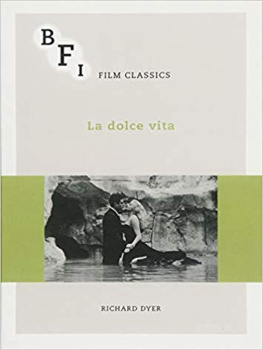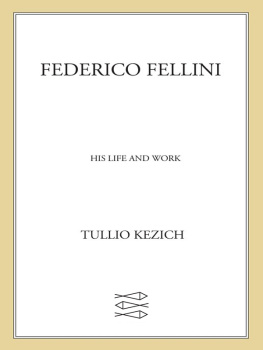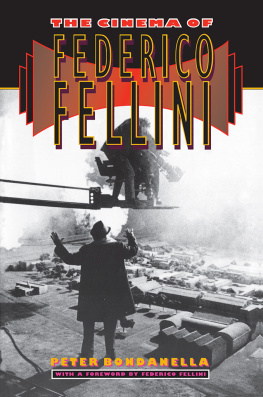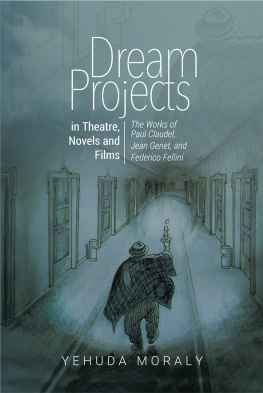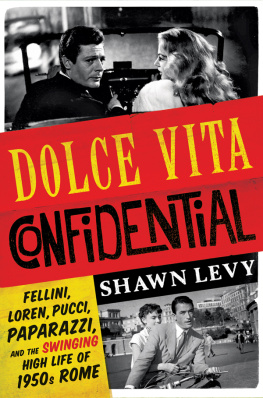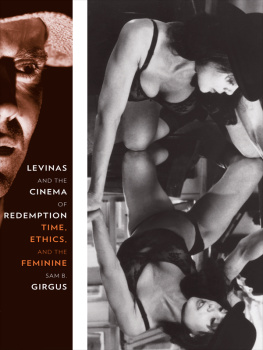The Journey
of G. Mastorna
The Journey
of G. Mastorna
THE FILM FELLINI DIDNT MAKE
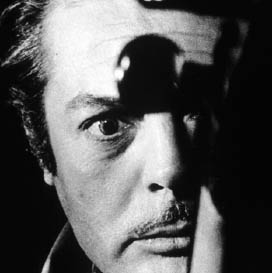
FEDERICO FELLINI
with the collaboration of Dino Buzzati, Brunello Rondi
and Bernardino Zapponi
Translated and with a commentary by Marcus Perryman

First English edition published in 2013 by
Berghahn Books
www.berghahnbooks.com
Originally published as Il viaggio di G. Mastorna
Federico Fellini, Dino Buzzati,
Brunello Rondi and Bernardino Zapponi
of the English-language edition Berghahn Books, New York/Oxford
of the Introduction and essay Imagining Mastorna Marcus Perryman
of the Preface Peter Bondanella
All rights reserved. Except for the quotation of short passages
for the purposes of criticism and review, no part of this book
may be reproduced in any form or by any means, electronic or
mechanical, including photocopying, recording, or any information
storage and retrieval system now known or to be invented,
without written permission of the publisher.
Library of Congress Cataloging-in-Publication Data
Fellini, Federico.
[Viaggio di G. Mastorna. English]
The journey of G. Mastorna : the film Fellini didnt make / Federico Fellini ; with the collaboration of Dino Buzzati, Brunello Rondi and Bernardino Zapponi ; translated and with a commentary by Marcus Perryman. -- First English edition.
pages cm
Screenplay and commentary on an unproduced motion picture.
Includes bibliographical references and index.
ISBN 978-0-85745-970-1 (hardback : alk. paper) -- ISBN 978-0-85745-971-8 institutional ebook)
1. Fellini, Federico--Criticism and interpretation. I. Buzzati, Dino, 1906-1972. II. Rondi, Brunello. III. Zapponi, Bernardino. IV. Perryman, Marcus, translator, writer of added commentary. V. Title.
PN1997.3.F44313 2013
791.4372--dc23
2013006043
British Library Cataloguing in Publication Data
A catalogue record for this book is available from the British Library
Printed in the United States on acid-free paper
ISBN 978-0-85745-970-1 (hardback)
ISBN 978-1-78238-230-0 (paperback)
ISBN 978-0-85745-971-8 (institutional eisbn)
ISBN 978-1-78238-231-7 (retail eisbn)
Contents
by Peter Bondanella
Foreword
The following pages present an important film script written by Federico Fellini in 1965/6 in collaboration with Brunello Rondi, Dino Buzzati and Bernardino Zapponi, translated for the first time into English. The script has been available in Italian since 1995.
The introduction includes an excerpt from a letter by Fellini to his producer Dino De Laurentiis, explaining his intentions for the film. It discusses the roles of the co-scriptwriters and the difficulties Fellini encountered with Buzzati, in particular. I also briefly discuss how the unmade film might have completed a trilogy of films with La dolce vita and 8. Without over-anticipating details of the script, Fellinis habit of plundering Mastorna for ideas and scenes for the rest of his films is illustrated.
After the script, Imagining Mastorna discusses how Fellini intended to make the film, with what crew and cast, its pace and some possible techniques, based on his films of the same period. Also discussed are the events from 1965 to 1967 that led to Fellini abandoning the project. I briefly summarize and contextualize the three other scripts written by Fellini not turned into film at the time of Mastorna (or, in fact, subsequently). The final sections are dedicated to a famous film and a not-so-famous novel that influenced the script and may have significantly shaped the ending.
Throughout, I have tried to provide background information of use to specialists and non-specialists, and to stimulate curiosity leading, hopefully, to further study. Only once have I given in to the temptation to direct a scene. I hope readers will similarly be drawn into imagining how Fellini might have shot the film. My thoughts have been influenced at times by a film made a few years before Fellini set to work on Mastorna: Orson Welless The Trial. Also tempting is to ponder how a director Martin Scorsese, Terry Gilliam or a film-maker not so evidently influenced by Fellini, such as Marc Forster or Lars von Trier might set about making Mastorna today.
Preface
Peter Bondanella
Like the monstrous whale in Melvilles Moby Dick that haunted Captain Ahab and nearly caused the death of the novels narrator, Fellinis unrealized film, The Journey of G. Mastorna, became his white whale after the smashing popular and commercial successes of La dolce vita and 8 and the relative failure of Juliet of the Spirits. The initial stages of this projects birth involved not only dramatic personal changes in Fellinis usual collaborators on and off the set, but they also raised legal problems and may well have contributed to a near-fatal illness that almost ended the directors life. All of the fascinating details surrounding the creation and ultimately the abandonment of Fellinis project are minutely and dramatically described by Marcus Perryman in his excellent critical essay, Imagining Mastorna and the introduction to his new English translation of the Italian script. For the rest of his life, Fellini would have the production of this film in the back of his mind, and although he never succeeded in making it, almost everything he did during the last three decades of his long and eventful career shows some sign that this unrealized film had left a mark on those that followed. The Mastorna project became, in Fellinis own description, a kind of storehouse of themes and images that were sometimes brushed off and employed in a very different context from Fellini Satyricon through Toby Dammit, Roma, Amarcord, The City of Women, Ginger and Fred, Interview and The Voice of the Moon. Because Fellini continuously considered turning his script into a film but never succeeded in doing so, a number of myths about the role this failure played in the directors life grew up. In particular, there was speculation that Fellinis superstitious nature prevented him from making a film about death because he thought that it might lead to his own demise in the process! Such a superficial estimation of Fellinis emotional, spiritual, and artistic capacities must rule out any such explanation for the Maestros ultimate failure to complete his film. His continuous concern with this project during a period of over three decades would argue against such a simplistic theory. Moreover, even a cursory examination of Fellinis recently published Book of Dreams reveals how Mastorna played a major role in the directors dreamlife, frequently illustrated by the marvellous kinds of magic-marker coloured drawings typical of Fellinis style as a cartoonist. In fact, Fellini always visualized his dreams in cartoons and caricatures, not as realistic and polished sketches, and those visions from his subconscious immortalized in his dream notebooks that concern Mastorna are first and foremost cartoons before they are serious and disturbing ruminations on the meaning of death and what awaits us beyond death.
The Journey of G. Mastorna is an oneiric narrative about a musician who finds himself in an ultra-earthly dimension after an airplane crash and who begins, despite himself, a journey of life and death in which the line between this world and the next is so faint and thin that he does not initially realize he is in the Afterworld. In the long tradition of Virgils
Next page

